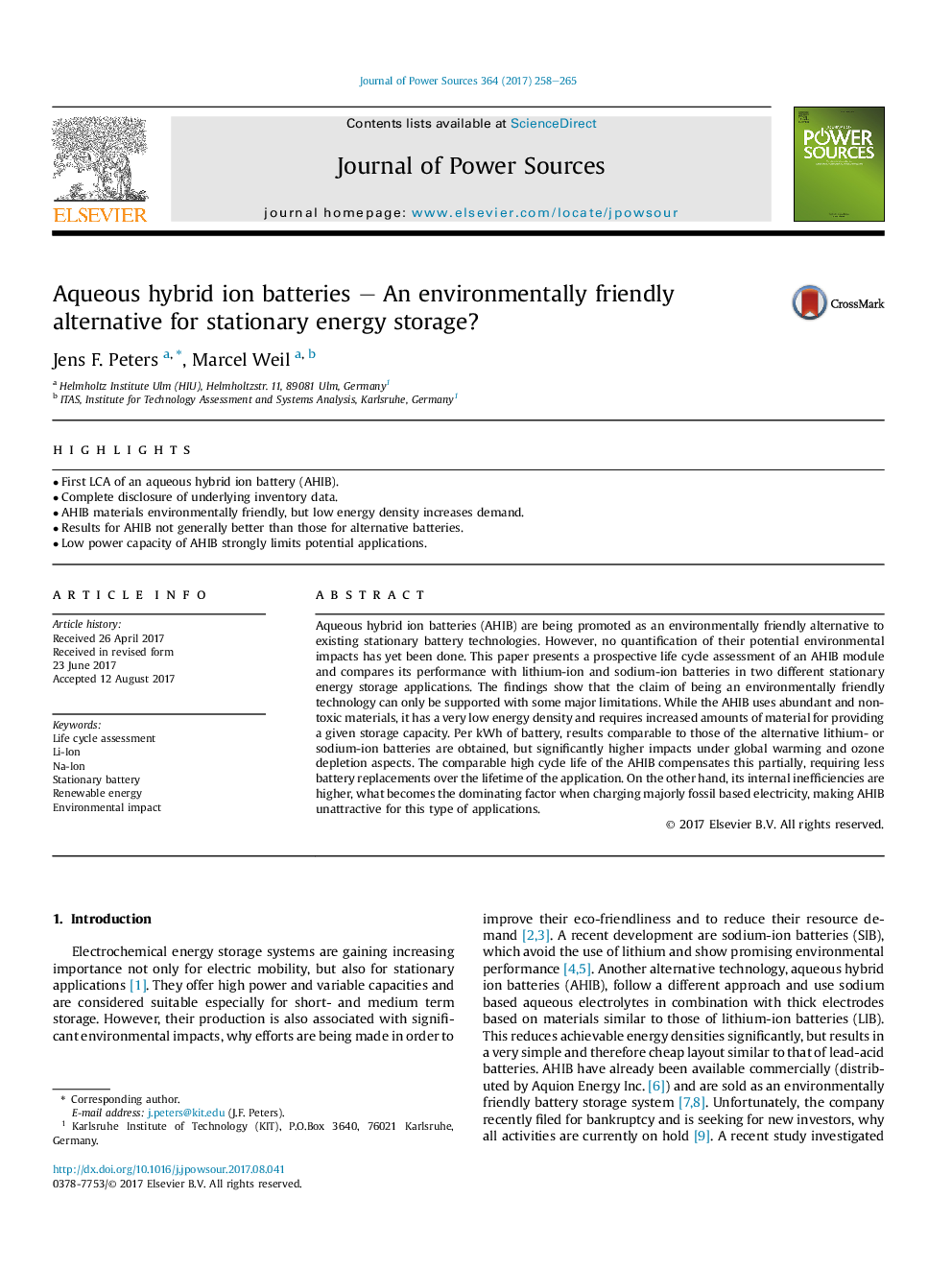| Article ID | Journal | Published Year | Pages | File Type |
|---|---|---|---|---|
| 5148684 | Journal of Power Sources | 2017 | 8 Pages |
Abstract
Aqueous hybrid ion batteries (AHIB) are being promoted as an environmentally friendly alternative to existing stationary battery technologies. However, no quantification of their potential environmental impacts has yet been done. This paper presents a prospective life cycle assessment of an AHIB module and compares its performance with lithium-ion and sodium-ion batteries in two different stationary energy storage applications. The findings show that the claim of being an environmentally friendly technology can only be supported with some major limitations. While the AHIB uses abundant and non-toxic materials, it has a very low energy density and requires increased amounts of material for providing a given storage capacity. Per kWh of battery, results comparable to those of the alternative lithium- or sodium-ion batteries are obtained, but significantly higher impacts under global warming and ozone depletion aspects. The comparable high cycle life of the AHIB compensates this partially, requiring less battery replacements over the lifetime of the application. On the other hand, its internal inefficiencies are higher, what becomes the dominating factor when charging majorly fossil based electricity, making AHIB unattractive for this type of applications.
Related Topics
Physical Sciences and Engineering
Chemistry
Electrochemistry
Authors
Jens F. Peters, Marcel Weil,
